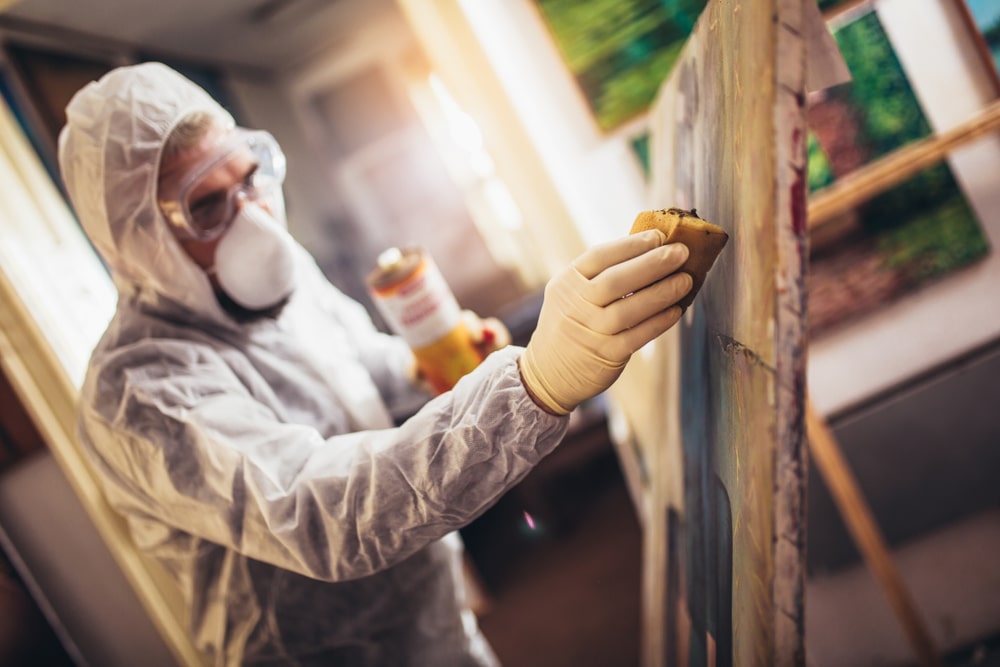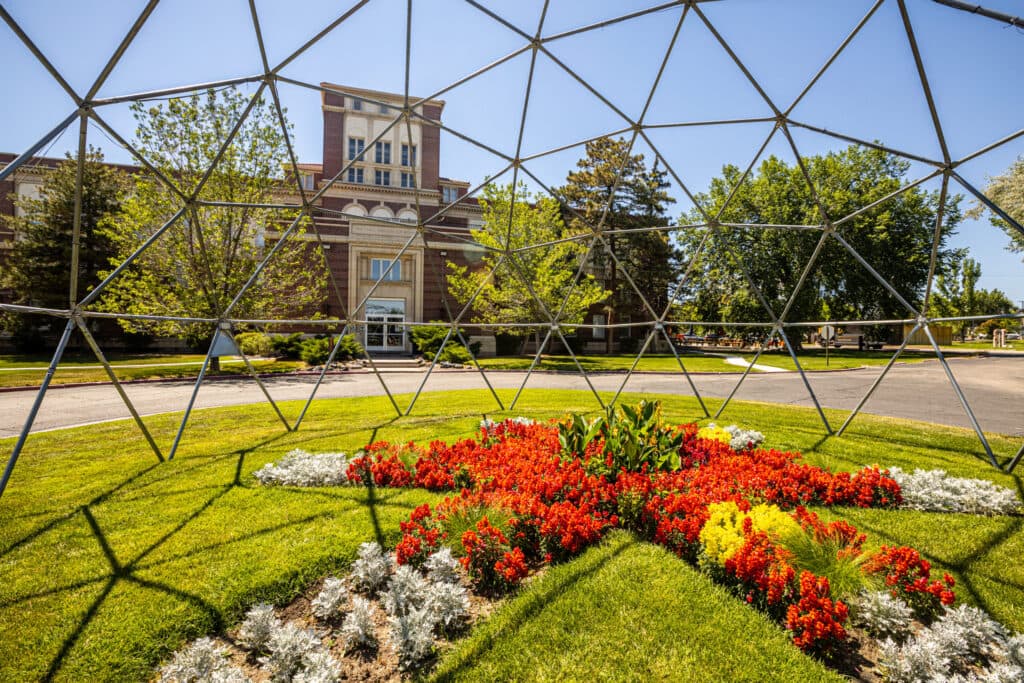The history of art conservation and restoration spans centuries, with scientific and technological advancements leading to increasingly effective and safe procedures for preserving and restoring works of art. But what is art conservation and restoration, and why is it so vital to preserving cultural heritage for future generations?
Understanding Art Conservation and Restoration
Although the terms are often used in conjunction with one another, art conservation and art restoration refer to two separate, yet intertwined, processes. Art restoration refers to the repair and restoration of artworks and artifacts that have suffered damage due to physical injury or natural decay. Art conservation is the process of preserving and maintaining art and artifacts to prevent further deterioration.
Importance of Art Conservation in Preserving Cultural Heritage
The tools and techniques of art conservation and restoration are vital to preserving cultural heritage. The professionals who do this work are usually called conservators or restorers, and their knowledge of art history and chemistry is indispensable to both protecting and restoring culturally significant works. Their hard work ensures current and future generations can continue to enjoy access to these artworks that are so integral to a community developing a sense of cultural identity.
Role of Restoration in Art Conservation
Restoration is central to art conservation efforts. The pigments and materials used by artists and craftsmen throughout history are susceptible to damage caused by time, sunlight, water, mold and mildew, and human carelessness. The efforts of conservators help bring works of art as close as possible to their original appearance. Fixing damage and removing dirt, grime and discolored varnish restore these objects to their former glory, increasing their value and allowing art enthusiast of today and tomorrow to appreciate their beauty and cultural significance more fully. Seeing artworks before and after restoration can really highlight the impact restoration efforts have on art conservation – the improvement in appearance can be truly astounding!
Colorado’s Cultural Heritage
Colorado’s cultural heritage is shaped by a diverse array of ethnic and historical influences, ranging from a long history of Native American presence in the region to the state’s role in the mining boom of the 19th century. Such a rich cultural heritage requires concerted efforts to preserve it for future generations.
Historical Artifacts and Collections
It would take a whole book (perhaps multiple volumes) to truly do justice to the vast array of historical artifacts and collections contained within Colorado’s borders. A couple noteworthy examples of efforts to preserve, protect and restore these valuable cultural artifacts include:
- Mesa Verde Artifacts
Mesa Verde National Park was founded in 1906 by President Teddy Roosevelt to “preserve the works of man.” The works he is referring to are some of the most impressive examples of Ancestral Puebloan archeological sites in the nation. Unfortunately, a Swedish researcher named Gustaf Nordenskiöld came across the region in his travels 16 years prior and proceeded to excavate and export hundreds of items across the Atlantic. Nordenskiöld seems to have had decent intentions, truly valuing the sites for their archaeological and cultural value. He was appalled by the destruction caused by looters and black-market profiteers and set about obtaining as many artifacts as he could, archiving them in careful records, with many of the objects he stole ending up in the National Museum of Finland in Helsinki. The Finnish government is now cooperating with the Hopi Cultural Preservation Office to repatriate these precious items to descendant tribes in Colorado.
- Denver Art Museum Collection
The Denver Art Museum was founded in 1893 as the Denver Artists’ Club and houses more than 70,000 artifacts and works of art. Their 12 collections span from ancient Indigenous arts of North America to modern and contemporary art, with a special emphasis on works by artists from the Rocky Mountain region. The museum is committed to conservation efforts, establishing a dedicated conservation department in 1991. This department includes “five conservators with specialties in works of art on paper, photographs, paintings, textiles, archaeological and ethnographic objects, and modern and contemporary art.
Impact of Conservation on State’s Cultural Identity
Conservation efforts can be a cornerstone of a state’s identity by shaping how its residents, visitors and the world perceive and relate to it. When state governments, museums and citizens prioritize preserving their state’s natural landscapes, historic sites, and cultural artifacts, the deeper cultural and historical significance of these objects and locations form a part of residents’ identities. Protecting your home’s cultural heritage instills a sense of pride in your community and a connection to the state’s present, past and future. Examples of cultural heritage efforts of import to Colorado include:
- Colorado Mining Heritage
Mining has been vital to Colorado’s economy since the Gold Rush of the 1800s. Colorado’s Department of Reclamation, Mining & Safety is responsible for the Abandoned Mine Reclamation program that addresses safeguarding and closing down abandoned mines in the region. The Western Museum of Mining & Industry was established in 1970 to preserve and interpret the “rich mining history of Colorado and the American West.” Nonprofits like the San Juan County Historical Society (SJCHS) have dedicated themselves to preserving Colorado’s storied mining heritage, operating the “Mining Heritage Center, the 1902 County Jail Museum in Silverton, the Mayflower Mill Tour, the Allen Nossaman Memorial Archive, and the Silverton Power Station.” The entire mining town of Silverton has been designated a National Historic Landmark, along with the Durango and Silverton Narrow Gauge Railroads. These are but a handful of examples of initiatives and organizations across the state working to preserve and share Colorado’s mining history with residents and visitors.
- Indigenous Art Preservation
The Denver Art Museum was one of the first American museums to begin collecting and preserving North American Indigenous art. The museum houses “over 18,000 objects by artists from over 250 Indigenous nations,” making it one of the most comprehensive collections in the world. Meanwhile, the University of Denver Museum of Anthropology is home to over 100,000 anthropological artifacts, including the Franktown Cave Collection and the E. B. Renaud Collection. The University strives to serve as a “training center in the ethical stewardship of museum collections,” working with Tribal Nations in accordance with the Native American Graves Protection and Repatriation Act.
Steps Involved in the Restoration Process
Art restoration aims to preserve the integrity of a work of art or architecture while cleaning and repairing any damage or decay that has afflicted the work in the intervening years. The exact conservation techniques required to restore an artifact will depend on factors such as its medium, condition and state of decay. For the sake of example, let’s examine the restoration process for a painting:
- Preliminary Assessment
Conservators use their wealth of knowledge regarding art, history, chemistry and materials science to “determine painting techniques, materials available to artists during the time, and pigments and fabrics that were commonly used.” Once this background information is established, the research and analysis stage can begin to pinpoint the specifics of the piece in question.
- Research and Analysis
Once a conservator has a pretty good idea of a painting’s period and probable composition, they will conduct research to verify their educated assumptions. Researching a work’s provenance can reveal a history of any alterations that may have been done. They can also verify specifics like what pigments were used through a variety of scientific analyses. X-rays can help determine the painting’s composition, infrared imaging can reveal the original drawing underneath the layers of paint, and spectroscopy can help conservators determine the composition of the varnishes used.
- Cleaning and Surface Preparation
After obtaining a holistic picture of the painting’s history, composition, techniques and pigments, conservators can proceed with the cleaning and surface preparation process. Restorers will conduct solubility tests to verify that the cleaning agents chosen will effectively remove old varnish, dust and dirt while maintaining the painting’s integrity.
- Structural Stabilization
Paintings, especially those on canvas or other flexible supports, are susceptible to damage over time. The goal of structural stabilization is to address these problems and prevent further deterioration, ensuring the painting’s long-term preservation. Conservators will mend tears and holes, apply varnish to separate new paint from old, re-adhere sections of canvas that have come loose, and fill and reinforce cracks and slits.
- Varnishing and Final Protection
After all repairs have been completed and damaged areas have been carefully repainted using period-appropriate pigments, conservation-grade varnish can be applied to improve the overall appearance of the painting and “ensure that a professionally restored work will rarely need further conservation.”
Conservation Challenges
Efforts to protect Colorado’s natural and cultural heritage are threatened by several environmental and economic factors. Many of the state’s cultural sites, for example, are protected by governmental, nonprofit and private organizations all vying for the same funding sources. An increase in population means the demand for land development increasingly infringes upon efforts to conserve Colorado’s natural heritage sites. Meanwhile, extreme weather events like wildfires, flashfloods and landslides are increasing in prevalence due to climate change and directly threaten cultural heritage sites and historical structures. Proactive strategies such as robust disaster preparedness plans are integral to addressing these issues.
Colorado Art Conservation Resources
Colorado’s vibrant cultural heritage is protected by a diverse and dedicated community of conservators, art enthusiasts, governmental agencies, and public and private institutions. A few standouts in the fight to maintain Colorado’s cultural legacy for future generations include:
Western Center for the Conservation of Fine Arts (WCCFA)
WCCFA has been in the conservation business for over 35 years, offering “public lectures, seminars, and workshops focusing on proper care, handling, storage, and examination techniques” to educate museum professionals and the general public about art conservation. With a nationally respected reputation in the conservation field, WCCFA helps establish, maintain and promote professional best practices in art conservation.
Colorado Preservation, Inc.
Founded in 1984 as a 501(c)3 nonprofit originally called Preservation Action Colorado, Colorado Preservation, Inc. is a grassroots organization dedicated to preserving Colorado’s built heritage. Their public policy committee’s efforts have resulted in the passing of the State Income Tax Credit for Historic Rehabilitation of 1990, and their Endangered Places Program has assisted dozens of communities in their preservation efforts across the state.
Americas for Conservation+the Arts (AFC+A)
AFC+A is a Latina-founded and led 501(c)3 nonprofit that addresses racism in the conservation space while “advancing community resilience, a citizenry of environmental stewards, [and] leveraging arts and culture for conservation gains.” Their culturally relevant educational programs promote the presence of BIPOC and historically underserved communities in the fight against climate change.
Impact of Art Conservation on Future Generations
Art conservation serves as a bridge between the past and the future, fostering an appreciation for cultural diversity, encouraging creativity, and contributing to a collective heritage that transcends time. The impact of art conservation in shaping the cultural legacy that future generations inherit cannot be overstated. Cultural and artistic conservation efforts serve to preserve art, artifacts and locations so people who are not yet born will one day be able to enjoy and learn from them. Conservation maintains artistic diversity, ensuring the artistic accomplishments of various communities are not lost. Exposure to and education on the cultural heritage of your state can inspire creativity and environmental stewardship while fostering a sense of cultural identity.
Ignite Your Passion: Apply to RMCAD’s Programs Today!
Are you ready to join the art movement in Colorado? Rocky Mountain College of Art & Design has on-campus and online programs ranging from fine arts and art education to graphic design and animation. Request more information or apply today!

